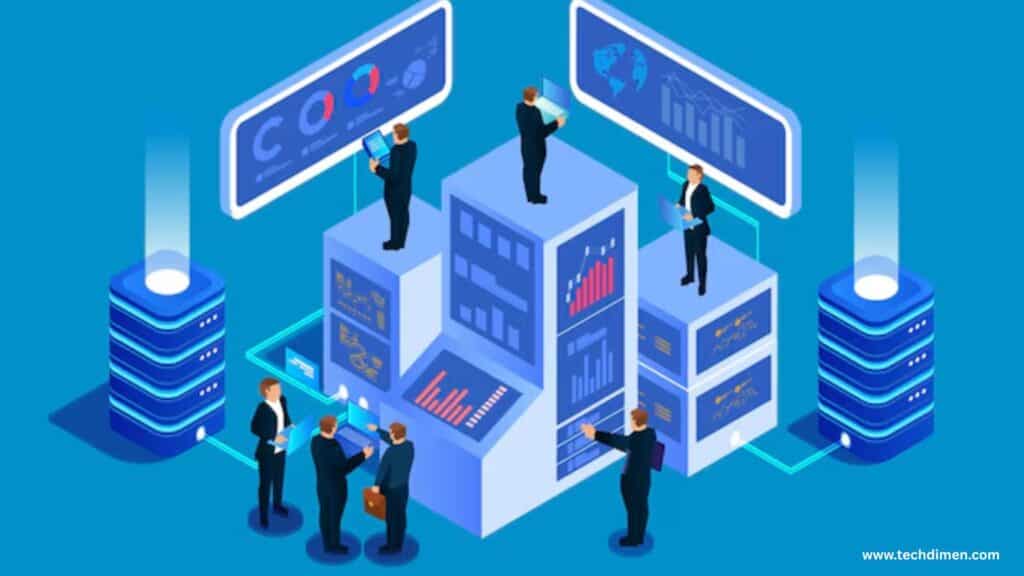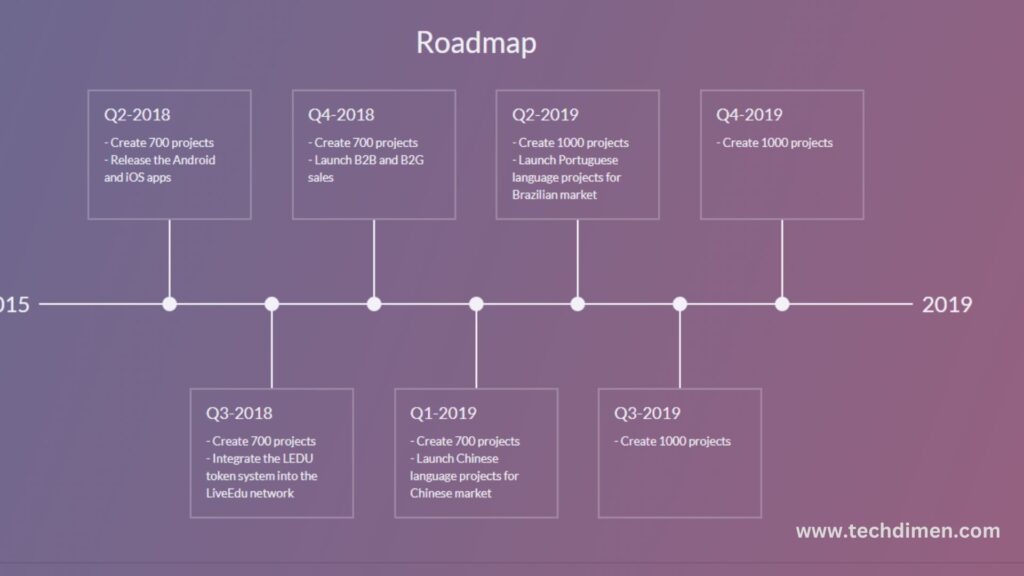The ITRS Technology Roadmap outlines how ITRS Group plans to evolve its monitoring and observability tools like Geneos to meet the growing demands of modern IT environments. As systems become more complex and data driven, this roadmap helps businesses stay ahead with smarter automation, AI driven insights, and greater resilience.
It’s not just about updates it’s a forward-looking strategy focused on performance, scalability, and customer needs. If you rely on this time monitoring, especially in finance, telecom, or critical infrastructure, this roadmap shows where the future is headed.
Origins, Evolution, and Role in Critical Infrastructure Monitoring
Since its inception, ITRS Group has focused on providing monitoring tools tailored to financial institutions and enterprises with mission critical workloads. Over the past decade, the roadmap has evolved from simple product iterations to a comprehensive development roadmap for observability platforms that span DevOps, SRE, ITSM, and hybrid infrastructure teams.
Alignment with Global Trends in Automation, AIOps, and Resilience
The ITRS roadmap aligns with macro trends reshaping enterprise IT. These include automation in IT monitoring, AI and ML driven insights for predictive operations, infrastructure observability for hybrid and multicloud ecosystems, compliance automation for regulated industries, and the emergence of site reliability engineering as a key design principle.
The technology roadmap ITRS offers is not just reactive it is proactive, transparent, and designed to enable future proof monitoring platforms.
Core Pillars of the ITRS Technology Roadmap
Observability Across Distributed Systems ITRS Technology Roadmap

Modern applications demand this time monitoring evolution, especially in sectors like high-frequency trading where milliseconds matter. ITRS Geneos continues to lead the way with low latency data collection, distributed data feeds, and event-stream processing.
A senior engineer at a global investment firm mentioned that with Geneos, they are able to monitor their entire infrastructure in real time across on-premise and cloud environments without losing visibility or performance.
Autonomous Ops: AI, ML, and Intelligent Noise Reduction
AI and machine learning in observability are no longer aspirational. The ITRS development roadmap includes capabilities such as anomaly detection using historical baselines, root cause correlation across event sources, predictive analytics in monitoring for pre-emptive alerts, and noise reduction by clustering non-actionable alerts.
These features empower teams to act faster and smarter, minimizing downtime.
Hybrid Cloud and Container Native Monitoring Advancements
The hybrid infrastructure monitoring capabilities in the ITRS roadmap now include Kubernetes native integration that delivers full visibility into containerized workloads, multi cloud monitoring support for a unified view across AWS, Azure, and GCP, and agentless data ingestion that reduces overhead and accelerates deployment. This helps organizations implement cloud native monitoring roadmaps while continuing support for legacy systems.
Predictive Health Scores, Smart Alerting, and Self Healing ITRS Technology Roadmap
The roadmap for IT monitoring tools also incorporates predictive health indicators, enabling teams to assess risk before failure. Combined with event-driven alerting and integrations with automation platforms, the system can initiate self-healing workflows to maintain uptime.
Unified Dashboards and End to End Visibility Enhancements
Visual clarity is essential in observability platforms. The ITRS roadmap brings context-rich, customizable dashboards that provide business service views, KPI heatmaps, and interactive topology maps. All of this contributes to a more intuitive and scalable enterprise observability experience.
Strategic Direction: ITRS Group’s Vision for Scalable Monitoring

Delivering Operational Resilience at Speed and Scale
Operational resilience isn’t just a buzzword. ITRS is committed to building tools that detect issues, adapt dynamically, and scale seamlessly. This supports the goal of building sustainable IT operations roadmaps that work across industries.
Security-First Architecture and Compliance Readiness
For financial services monitoring tools, compliance and audit-readiness are essential. The ITRS observability roadmap includes automated audit trails, role-based access control, and GDPR and regional compliance support.
Quarterly Milestones with Backward Compatibility
The ITRS group roadmap includes quarterly software releases that deliver feature enhancements, bug fixes, performance improvements, and backward compatibility with existing configurations. This reflects a customer-driven product development roadmap that stays responsive to enterprise needs.
Empowering SRE, NOC, and App Owners ITRS Technology Roadmap
The roadmap ensures DevOps observability tools are usable across SRE teams focused on service reliability, NOC operators monitoring infrastructure around the clock, and application owners who are accountable for SLA delivery.
How the ITRS Technology Roadmap Solves Business Challenges
Supporting Regulatory Compliance in Finance and Capital Markets ITRS Technology Roadmap

Institutions use ITRS to meet stringent compliance requirements by automating log retention and traceability, flagging policy violations in real time, and generating compliance ready reports.
Accelerating Root Cause Analysis for DevOps and SRE
Downtime is expensive. The ITRS roadmap shortens MTTR by automating incident correlation, highlighting affected services instantly, and visualizing infrastructure dependencies in a clear and actionable way.
Bridging the Gaps Between ITSM, ITOM, and Observability Platforms
Through ITSM integration with monitoring, the ITRS platform connects with ServiceNow, Jira, and other tools. This provides incident auto ticketing, change management alignment, and full incident lifecycle visibility.
Enabling SLA Adherence and MTTR Reduction Across Critical Workloads
A future proof monitoring platform must support metrics that matter. Organizations using ITRS have seen improvements such as a 42 percent reduction in mean time to detect, a 38 percent reduction in mean time to resolve, and SLA compliance rates as high as 99.8 percent.
Key Milestones from 2024 and Projections
Notable 2024 Product Launches and Platform Upgrades
In 2024, ITRS released several key enhancements, including Geneos AI Extensions for predictive modeling, enhanced OP5 integrations with network hardware, support for OpenTelemetry ingestion, and a redesigned UX for Capacity Planner.
2025 Preview: Embedded AI Agents, API First Design, and Data Federation
The upcoming features in 2025 include AI agents embedded for this time decision making, an API first redesign for seamless integration, and cross-platform data federation for unified observability.
Future Focused Capabilities: Edge Observability and Multicloud Governance
Looking ahead to 2025 and 2026, the roadmap will tackle edge monitoring for IoT and remote locations, multicloud policy enforcement, and GreenOps monitoring to promote environmental efficiency.
Open Innovation Loop: Beta Access and Public Feedback Integration
The open roadmap communication with clients allows users to join early access programs, vote on feature priorities, and submit usability feedback directly to product teams. This helps keep innovation aligned with actual needs.
How to Track and Leverage the ITRS Roadmap
Using the ITRS Portal for Live Roadmap Access
Registered users can view the ITRS monitoring roadmap in real time via the customer portal, which offers detailed timelines, release notes, and changelogs.
Subscribing to Dev Briefs, Patch Notes, and Customer Webinars
Users are encouraged to subscribe to ITRS group software updates, attend monthly roadmap webinars, and receive real-time technical patch notes.
Contributing to Roadmap Feedback and Feature Prioritization
The customer feedback loop is essential to the roadmap. Product managers rely on NPS surveys, feature request voting, and advisory board insights to shape future releases.
ITRS Technology Roadmap in Action Across the Enterprise
47% MTTR Reduction Using Geneos AI
A leading investment bank used the latest ITRS Geneos future enhancements to reduce mean time to resolution by nearly half. They achieved this by automating correlation across more than 1500 monitored nodes, using machine learning in observability to filter noise, and implementing this time health scoring.
Multinational Retailer: SLA Assurance Across 23 Countries
With over 300 stores across multiple continents, a major retailer used ITRS Group’s roadmap tools to monitor cloud, network, and in-store infrastructure, integrate Geneos with ServiceNow for incident handling, and maintain 99.95 percent uptime across retail systems.
Insurance Leader: Compliance Simplification and Audit Readiness
A global insurer applied the ITRS roadmap for enterprise IT resilience to automate data retention, validate encryption policies, generate compliance reports in under 10 minutes, and integrate observability with internal GRC systems.
Why the ITRS Technology Roadmap Sets the Bar for IT Monitoring
Future Proofing Infrastructure with Built In Flexibility
The ITRS platform supports both legacy systems and modern cloud native workloads. This makes it easier for organizations to migrate without losing observability or reliability.
Bridging Tech Silos with Unified, Context Rich Monitoring
By correlating telemetry across applications, infrastructure, and networks, ITRS enables actionable observability that reduces operational silos and improves efficiency.
Investing in Observability That Pays for Itself
The return on investment is tangible when outages are avoided, compliance costs drop, and operations teams become more productive and confident.
Summary Table: ITRS Technology Roadmap
| Focus Area | Key Features | Impact |
|---|---|---|
| Real-Time Monitoring | Low-latency feeds, AI analytics | Faster response, better performance |
| Hybrid Infrastructure | Multi-cloud, Kubernetes, agentless | Unified visibility, reduced complexity |
| Predictive Tools | Health scores, smart alerts | Proactive incident management |
| Compliance & Security | RBAC, audit trails, GDPR tools | Risk reduction, audit readiness |
| Team Integration | ServiceNow, Jira, ITSM connectors | Seamless workflows, SLA tracking |
FAQs About the ITRS Technology Roadmap
What Is the Purpose of the ITRS Technology Roadmap?
The ITRS Technology Roadmap serves as a strategic blueprint that outlines how ITRS Group plans to evolve its monitoring and automation platforms. It’s more than a product update schedule it’s a forward thinking vision that demonstrates how the company will meet the growing challenges of IT complexity, operational resilience, and hybrid infrastructure.
Why Should Enterprises Pay Attention to the ITRS Roadmap?
For IT leaders and decision makers, the roadmap provides crucial insights into upcoming features and long-term product direction. It helps enterprises align their technology strategies with future innovations, ensuring they stay ahead of compliance requirements, performance expectations, and digital transformation demands.
How Does the Roadmap Support Real-Time Monitoring and Observability?
ITRS continues to strengthen its real-time monitoring capabilities through enhancements in Geneos and associated platforms. The roadmap emphasizes deeper observability, proactive issue detection, and predictive analytics. These developments are designed to give operations teams better visibility and faster incident response across increasingly complex IT environments.
What Role Does AI Play in the Future of ITRS Technology?
Artificial intelligence and machine learning are central to ITRS’s roadmap. The company is working toward smarter monitoring systems that can detect anomalies, automate alert responses, and reduce the noise in incident reporting. Future capabilities include behavior based insights, auto-remediation workflows, and adaptive alerting engines.
Is Geneos Still a Priority in the ITRS Strategy?
Yes, Geneos remains a core focus within the roadmap. ITRS continues to invest in enhancing Geneos for scalability, cloud compatibility, and integration with modern toolchains like Kubernetes, CI/CD platforms, and service management systems. These improvements aim to make Geneos more adaptable for hybrid and multi cloud environments.
How Often Is the Roadmap Updated and Shared with Clients?
The ITRS roadmap is updated regularly typically on a quarterly or biannual basis. These updates include new feature announcements, timelines for product enhancements, and strategic shifts based on customer needs and market trends. ITRS maintains transparency by sharing these updates through its website, newsletters, and product briefings.
Can Customers Influence the Roadmap Direction?
Yes, customer feedback is an essential part of how the roadmap evolves. ITRS actively engages with clients through webinars, user forums, and dedicated feedback channels. These conversations help shape feature prioritization and inform decisions around usability, scalability, and integration.
Which Industries Benefit Most from the ITRS Roadmap?
The roadmap delivers particular value to industries where this time performance, compliance, and risk mitigation are critical. Financial services firms rely on ITRS for trading system monitoring and regulatory alignment. Telecom companies depend on the platform to maintain uptime in distributed environments. Healthcare and insurance sectors use ITRS to secure sensitive infrastructure with minimal disruption.
Where Can You Find the Latest Roadmap Updates?
ITRS shares roadmap updates through its official website and client communications. Users can access detailed insights by subscribing to newsletters, attending roadmap webinars, or participating in partner sessions where upcoming innovations are discussed openly.
What Is the Long Term Goal of the ITRS Technology Roadmap?
The overarching mission behind the roadmap is to build a resilient, intelligent, and adaptive monitoring ecosystem. ITRS is focused on delivering tools that empower IT teams to respond faster, reduce operational risk, and simplify observability across complex, high performance infrastructure. By combining human expertise with smart automation, the roadmap aims to redefine how enterprises manage and scale their IT operations.
final thought
To thrive in a digital first world, enterprises need transparent IT monitoring strategies, AI enhanced diagnostics, and platforms that can scale with growth. The ITRS technology roadmap delivers all of these advantages and continues to raise the bar.
This roadmap isn’t just about technology. It’s about building resilience, enabling smart automation, and giving enterprises the tools to perform at their best under pressure.
Stay informed by exploring the ITRS Group Roadmap online and subscribing to updates. It’s the clearest path to staying ahead in enterprise observability.

Jhon AJS is a tech enthusiast and author at Tech Dimen, where he explores the latest trends in technology and TV dimensions. With a passion for simplifying complex topics, Jhon aims to make tech accessible and engaging for readers of all levels.







